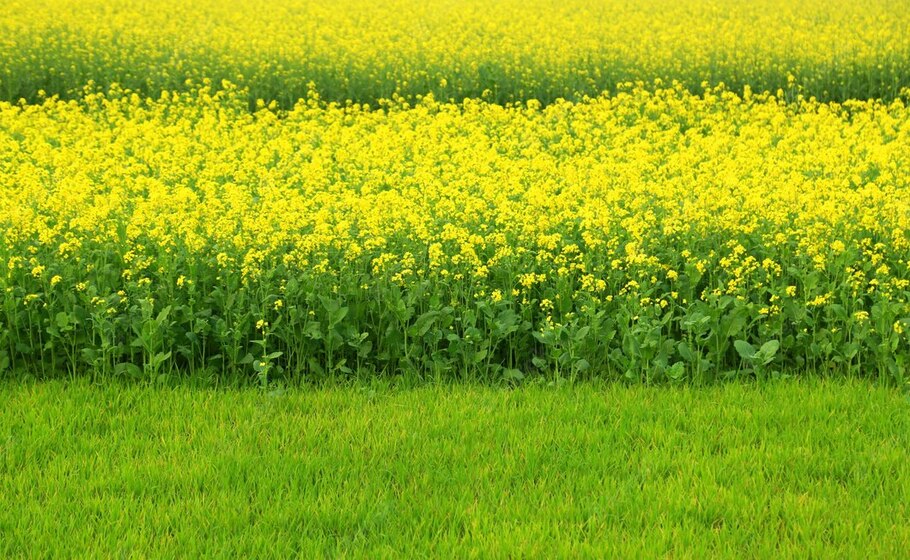
Australia has allowed GM mustard; will India clear Delhi University variety?

The Australian authorities have approved the release of genetically modified (GM) Indian mustard for herbicide tolerance. Now, it is only logical that the Indian government should allow the release of a high-yielding GM mustard hybrid developed by a team of Delhi University scientists led by Deepak Pental.
The Genetic Engineering Appraisal Committee (GEAC) is expected to recommend the release of Dhara Mustard Hybrid-11 (DMH-11) after Pental made a presentation before it in August. In that meeting, the GEAC set up an expert committee to examine his submissions. It will ensure that there is sufficient evidence that this GM mustard has little impact on honeybees and other pollinators. The expert committee has reportedly given its report.
A hybrid with “negligible risk”
On October 19, Australia’s Office of Gene Technology Regulator (OGTR) approved the commercial release of BASF’s Indian mustard with introduced genes derived from common soil bacteria. The approved hybrid is a cross between Indian mustard and GM canola. It has a bar gene that confers tolerance to glufosinate ammonium, a herbicide sold under the brand Basta, which BASF acquired from Bayer in 2017. Australia approved the release of GM canola in 2003.
Also read: GST has raised farmers’ woes, not income: BKS announces protest
The OGTR has not imposed any conditions. It said the risk assessment concluded that the approved hybrid posed “negligible risk” to the health and safety of people or the environment.
Since mustard is largely self-pollinating, the crossing is done by inducing male sterility using barnase gene obtained from a bacterium that stimulates plant growth and suppresses soil-borne plant pathogens, according to ISAAA, a non-profit organization for crop biotechnology. After pollination, male sterility is restored with a barstar gene, also derived from the same bacterium.
Pental’s team also used the bar, barnase, and barstar system to develop DMH-11 with funding from the National Dairy Development Board (NDDB) and the Department of Biotechnology.
A quicker way to produce hybrids
Mustard yield in India has increased from 481 kg per hectare in 1961 to 1.5 tonnes per hectare. It has been achieved through conventional pure-line breeding. Further yield increases require the use of hybrids. Pental says DMH-11 yields 28 per cent more than the popular Varuna variety.
Mustard hybrids can be developed conventionally through cytoplasmic male sterility. But this a tedious process. The sterility also tends to break down in certain conditions. GM technology is a quicker way of producing mustard hybrids.
Also read: Centre ropes in tech giants to use artificial intelligence in agriculture
The GEAC recommended the release of DMH-11 in May 2017 after the risk assessment concluded that the hybrid was safe for humans, animals, and the environment. But under pressure from anti-GM activists, including the Swadeshi Jagran Manch, a part of the Sangh Parivar, then Environment Minister Harsh Vardhan directed the GEAC to address concerns that the GM mustard hybrid might harm honeybees and pollinators. In August 2018, GEAC told Pental to conduct trials on five-acre plots at two or three locations to generate data on the impact of the hybrids on honeybees, other pollinators, honey, and soil microbial diversity.
Pental did not undertake the study. He had reason to believe that it was a dilatory device to postpone a decision. Instead, he wrote a letter to the GEAC and to the agriculture minister in May, requesting release of the hybrid. The GEAC sought the comments of the Department of Biotechnology (DBT) and the Department of Agricultural Research and Education (DARE). According to GEAC, the hybrid should be released.
Not grow yet import?
In the August meeting, Pental presented an analysis of the literature on the impact on honeybees and pollinators in other countries. He said Canada, the USA, and Australia had not imposed any condition while approving the release of GM canola in 1996, 2002, and 2003, respectively. GM canola has been developed using the same bar, barnase, and barstar system. He citied studies to assert that DMH-11 will not harm honeybees or pollinators.
Watch: Carbon Credits For ‘Climate-Smart’ Agriculture
It would be ironical if India did not allow the cultivation of GM mustard while importing it from Australia. India imported 52,000 tonnes of rapeseed (Brassica napus) oil in the 12 months to October 2021, according to the Solvent Extractors’ Association. Canola is also Brassica napus. Indian mustard (Brassica Juncea) is the preferred oil in north and eastern India because of its pungency. Pental says canola also has pungency, but that trait has been removed though breeding.
Among oilseeds, mustard has a high oil content, ranging from 31 per cent to 46 per cent. The Solvent Extractors’ Association had launched Mission Mustard in 2017 to increase mustard production. It said if Punjab planted mustard on a large scale, it could reduce the extraction of groundwater, which has dipped to alarming levels in many blocks of the state. It would also reduce India’s edible oil shortage.
India needs herbicide-tolerant mustard
Last year, mustard was planted on 7.7 million hectares. Production was 11.8 million tonnes, and the average yield, 1.5 tonnes per hectare.
In 2019, GM canola was planted on 10.1 million hectares, or 29 per cent of the global area under GM crops, according to ISAAA. Imports meet 50 to 60 per cent of India’s edible oil consumption. India imported 2.87 million tonnes of soybean in the 12 months to October 2021. Almost all of India’s imported soybean is genetically modified for herbicide tolerance and insect resistance.
Also read: Kanyakumari’s windmills mean big money for locals, but threaten survival of agriculture
Small quantities of Indian mustard are grown in Australia, mainly in Central New South Wales and western Victoria. Australia needs herbicide tolerance in crops because of large farm sizes. Mustard can be grown in its dryer regions.
Pental said India also needs herbicide-tolerant mustard, particularly in Rajasthan because of Orobanche (broomrape), a root parasite plant that badly affects the crop.

